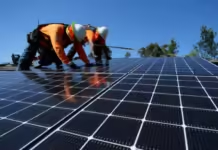Originally posted in New Age Bangladesh on 04 December 2021
Experts dismayed as more stress awaits consumers, exchequer
Bangladesh is on track to have its installed power capacity increased by 60 per cent in the next three and a half years though it cannot use more than half of its existing capacity, according to the latest power sector progress report released by the state-run Power Development Board.
In 2020–21, about 60 per cent of the installed capacity remained unused, causing Tk 132 billion to be spent as capacity charge paid to private sector rental power plants and marking about a 25 per cent increase in the expenditure since the year before and a 372 per cent rise over the past decade.
Capacity charge refers to a certain amount of money legally payable by the government for rental power capacity not used and is regarded as a key reason for rising power price, particularly in countries like Bangladesh.
Since the incumbent government has assumed office about 13 years ago the power price has been raised 10 times, by 98 per cent, often on the excuse of minimising the increasing deficit in the power sector.
In 2020–21, the PDB reported a deficit of Tk 115 billion, almost equal to the capacity charge, drawing a subsidy of Tk 118 billion.
‘Capacity expansion made not for rise in demand increases the cost and is a recipe for loss,’ energy expert Professor Ijaz Hossain of the Bangladesh University of Engineering and Technology told New Age.
‘In the coming years electricity will get even costlier,’ he said, calling for a revision of the power sector plan.
The country’s current installed power capacity is 22,031 megawatts to which 13,604MW more capacity is likely to be added by 2024–25, the PDB progress report released in October showed.
Over the next three and a half years, the PDB expects its maximum power generation to reach 19,900MW from 13,792MW achieved in 2020–21.
Still, according to the official estimate, the power overcapacity in 2024–25 would stand at 44 per cent, far above the maximum acceptable overcapacity threshold of 25 per cent.
Countries with efficient management and effective plans tackle emergency situations with just 10 per cent overcapacity, experts said.
‘By 2024–25, the actual power overcapacity will reach 67 per cent,’ said Consumers Association of Bangladesh energy adviser Professor Shamsul Alam.
‘It simply does not make any sense — the continued expansion of power generation capacity,’ he added.
The Institute for Energy Economics and Financial Analysis in an analysis in early 2020–21 warned that if power capacity use was not increased by 10 per cent year-on-year the power overcapacity in 2024—25 would cross 60 per cent.
With 99.75 per cent area of the country already electrified, finding consumers for additional 6,100MW electricity in less than four years would be next to impossible, especially when industries largely produce their own power, experts said.
Frequent power outages and voltage fluctuations due to inadequate transmission and distribution systems keep industries away from the national electricity grid.
The expansion of transmission and distribution networks could not cope with the expansion in power generation capacity.
Half of the capacity of the 1,320MW Payra Thermal Power Plant, the country’s largest power plant, could not be used as transmission lines could not be built though the plant became fully operational in 2020–21.
The unused capacity of the Payra plant costs the nation at the rate of Tk 2,000 crore a year.
The other half of the Payra plant in use often remains underused due to lack of demand.
‘Sometimes during winter, when power demand slumps, we cannot operate at full capacity,’ said Payra project director Shah Abdul Moula.
In winter, the maximum power demand in Bangladesh comes down to about 8,000MW.
The entire capacity of the 1,320MW Rampal power plant, likely to be in operation early next year, will possibly remain unused for a year, if not more, for its transmission lines construction is unlikely to complete in 2022.
A year of unused capacity at the Rampal power plant is estimated to cost the country Tk 2,000 crore annually in capacity charge.
In 2022–23, two more power plants, each having 1,320MW capacity, will become operational along with the country’s first-ever nuclear power plant with 2,160MW capacity.
‘We don’t need any new power plant,’ said Centre for Policy Dialogue research director Khondaker Golam Moazzem as he also demanded the cancellation of the provision for paying capacity charge.
‘Going by the latest official estimate,’ he said, ‘it is possible to meet the maximum power demand projected for 2024–25 with the existing installed capacity and still have 11 per cent overcapacity.’
Bangladesh can shed about 2,000MW overcapacity by discarding rental and quick rental power plants, he said.
At least 19 of the highly expensive rental and quick rental power plants, mostly small peaking power plants, introduced in 2008 for maximum five years under special circumstances, are still in operation, increasing power generation cost.
As countries scrambled for taking things back to the pre-pandemic state, a sudden surge in energy demand has increased power production cost globally.
The withdrawal of the world from coal as a source of energy has also pushed Bangladesh, still with little interest in renewable energy, to rely more on liquefied natural gas, which saw unprecedented high prices lately.
‘In the past two years, Bangladesh hardly met half of its gas demand, even after importing LNG,’ said Bangladesh Working Group on External Debt member secretary Hasan Mehedi.
‘Many of the power plants being built will end up stranded asset soon,’ he said.
The government has always defined its power overcapacity as emergency reserve or defended it as a way of addressing fluctuations in the power demand between hours in a day and among seasons.
‘A 44 per cent overcapacity is not unreasonable for a country like ours which seeks to keep space for switching between energy sources depending on their prices,’ said power cell director general Mohammad Hossain.
Regarding the capacity charge, he said that it was introduced so that power producers got a return on their investment in building infrastructure.
Power plant construction is often contracted out without bidding under the power of a law indemnifying such practice.






